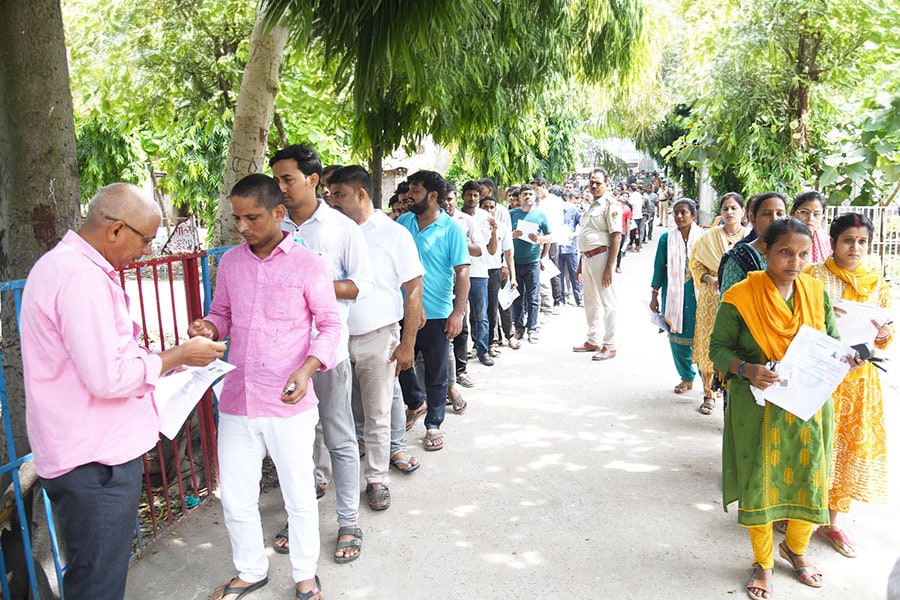
Budget 2024: Govt seeks to boost job-creation through incentive schemes
A three-pronged approach could help create up to 8 million jobs each year, say economists
 The government is aiming to strengthen the ecosystem to create more employment; Image: Santosh Kumar/Hindustan Times via Getty Images
The government is aiming to strengthen the ecosystem to create more employment; Image: Santosh Kumar/Hindustan Times via Getty Images
The government has, on Tuesday, gone full throttle in a bid to strengthen the ecosystem to create more employment, with incentives being provided to employers too. The need to boost employment, labour participation and skilling had become an electoral challenge, and a sensitive matter, for the government, which has been unsuccessful in creating more jobs and improving labour productivity.
Minister of Finance Nirmala Sitharaman announced a three-pronged strategy to boost job creation. The first is to provide one-month wages to all persons newly entering the workforce in all formal sectors. The direct benefit transfer of one-month salary in 3 instalments to first-time employees, as registered in the EPFO, will be up to Rs 15,000. The eligibility limit will be a salary of Rs 1 lakh per month. The scheme is expected to benefit 210 lakh youth.
The second proposal incentivises both the employer and the employee with regard to their EPFO contributions in the first four years of employment. This is aimed to benefit 30 lakh youth, besides their employers. The employer-focussed scheme will cover additional employment in all sectors. The government will reimburse employers up to Rs 3,000 per month for two years towards their EPFO contribution for each additional employee. The scheme is expected to incentivise additional employment of 50 lakh individuals.
Also read: Few jobs. Poor labour productivity. And no quick fixes
“There is a clear intention to reap the demographic dividend that India possesses, or at least work towards that,” Sakshi Gupta, principal economist at HDFC Bank, told Forbes India.


















